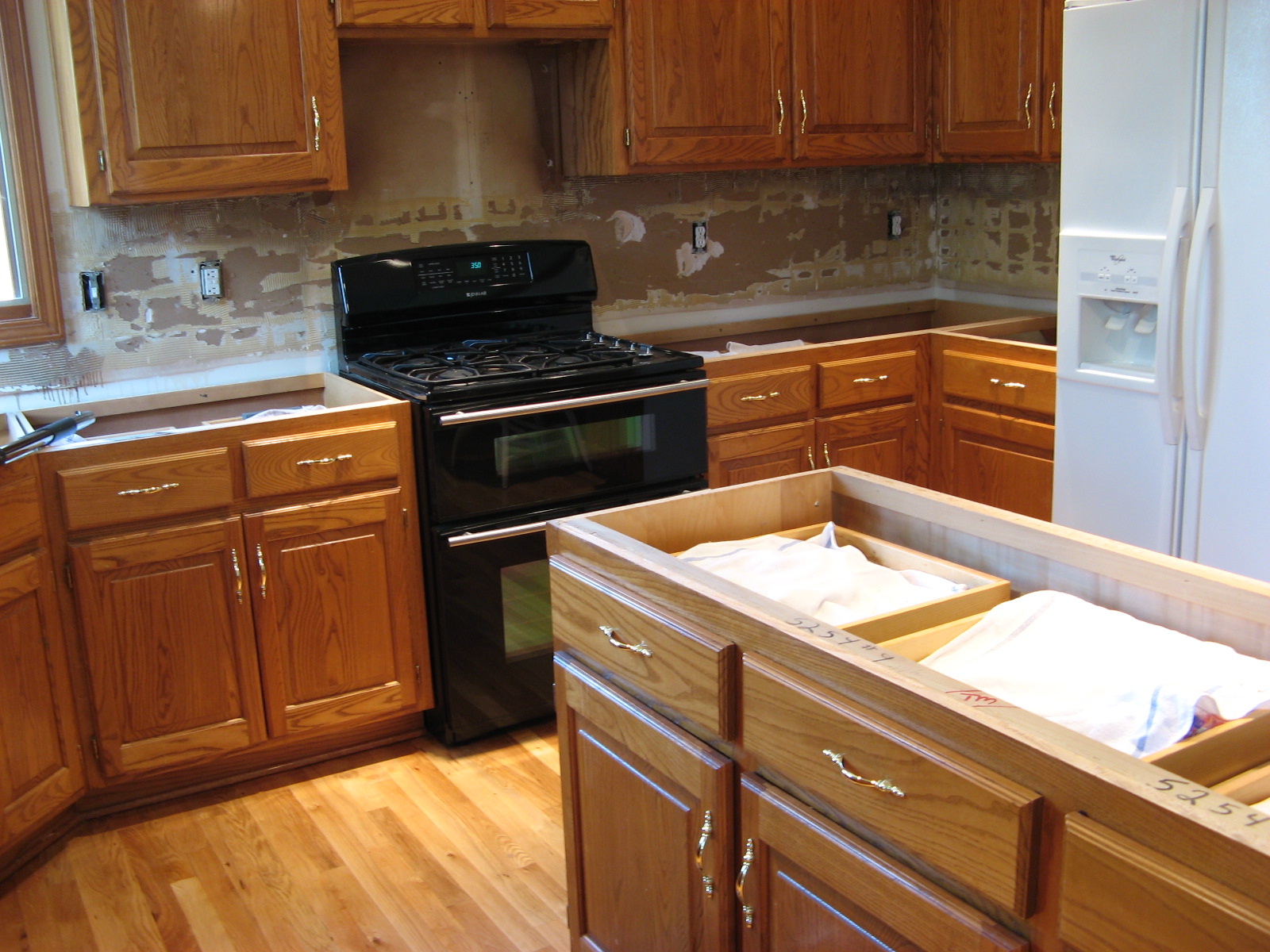What follows is a case study of "Its beautiful! Let's change it!"
When we moved into our present house in August 2007, one of the things that we especially liked about it was the large, open kitchen with lots of cabinet space and room to maneuver. No more tripping over each other, as in the cramped kitchen of the previous house; no more trying to find a place to set something down that wasn't already occupied by something else. It was pretty typical of houses that were built in this area in the mid-1990's; lots of honey-oak cabinetry, formica counter tops, ceramic tile backsplashes, etc.
We have, over the years, been collecting ideas of things we would like to have in our kitchen. There was the "If money was no object" list and there was the "Get real!" list. One of the things that we fell in love with a few years ago was soapstone for counter tops. I don't recall where or how we first became aware of it, but I do remember that after seeing it used (and still usable) in a Shaker village built in the mid-1800s we figured that durability wasn't going to be a problem. I'll spare you the rationalization / sales pitch as to why we chose it over other options. Let's just say we like it. In looking at the somewhat worn Formica counter tops that were in the house, we decided that this might just be the time and place to take the plunge.
Once the decision about counter tops was made, several other things followed in rapid progression. For instance, to take out the existing countertops, the existing backsplash had to be removed. Besides, white ceramic tile wouldn't have complement the new soapstone counters. To get all of the backsplash out, the existing microwave oven had to be pulled. Said microwave not only functioned poorly, it's vent fan recirculated cooking odors back into the house instead of venting outdoors. Oh, and the dinged up, surface-mounted porcelain sink? That had to go. While they're messing with the plumbing anyway, let's get a new disposal, too. To quote the King of Siam: "Et cetera, et cetera, et cetera."
So, by choosing new counter tops, we got:
- new counter tops (natch)
- new backsplash
- new microwave, vented outdoors
- new undermount sink
- new faucet
- new disposal
- new switches and outlets (to coordinate with new backsplash)
- new pulls for the drawers and cabinets
- new under-cabinet lights
Talk about unforeseen consequences!
The steam-injection oven remains on the "If money were no object" list. We decided that we could live with the existing white refrigerator, even though all of the other appliances are black.
The first thing to go was the backsplash and counter tops. Not having a place to set things down for a couple of weeks was an adjustment we never quite got used to:

The day after the wrecking crew tore out the backsplash and counters, another individual came to take the final measurements and make the templates that the stone fabricator would need to cut the raw slabs into the finished pieces for the counter tops.
A crew came back to install the wiring for the puck lights underneath the upper cabinets while the stone fabricator was doing his thing. Under-cabinet lighting wasn't something that had been on either list but after seeing how much darker the slate tiles were going to be, compared to the previous white ceramic tiles, we decided that it would be a good thing to have.
And then came the day that the new counters arrived:

The installer in the above picture is finishing a seam between two sections of counter top. Note that he has already installed the under-mount sink.
The final step for installing the counter tops was the application of a coat of mineral oil. When soapstone is oiled, it darkens dramatically. Since the stone isn't porous, I'm not sure exactly why it works. The closest approximation I can think of is the difference between dry pavement and wet pavement, particularly when driving at night, in the sense that the oil fills in microscopic irregularities on the stone's surface in much the same way that rain fills in the irregularities of the pavement's surface, making it look much darker. Or maybe I'm the one that's all wet. Anyway, oiling is not required. It does nothing for the stone, other than change its appearance. My wife thinks that she will probably not oil our counters with any frequency, if at all. She prefers the "dry" look. Here's a picture that shows part of the stone oiled and part of it dry:

Over the next couple of days, the slate tile backsplash was installed, grouted and sealed. You can also see two of the puck lights under the upper cabinets, along with the new faucet at the sink and the new pulls on the cabinets and drawers in this shot:

And a couple of more shots showing the finished work:


We had dithered about whether or not we should refinish the cabinets, eventually defaulting to a wait and see approach. Now that everything is in, we are content to keep them as they are.
We are very satisfied with how things have turned out, even though some of the et ceteras drove the price up higher than my informal initial estimate. We expect to be using, and liking, this kitchen for a long, long time.
Bottom line? "It's beautiful! Don't change a thing!"